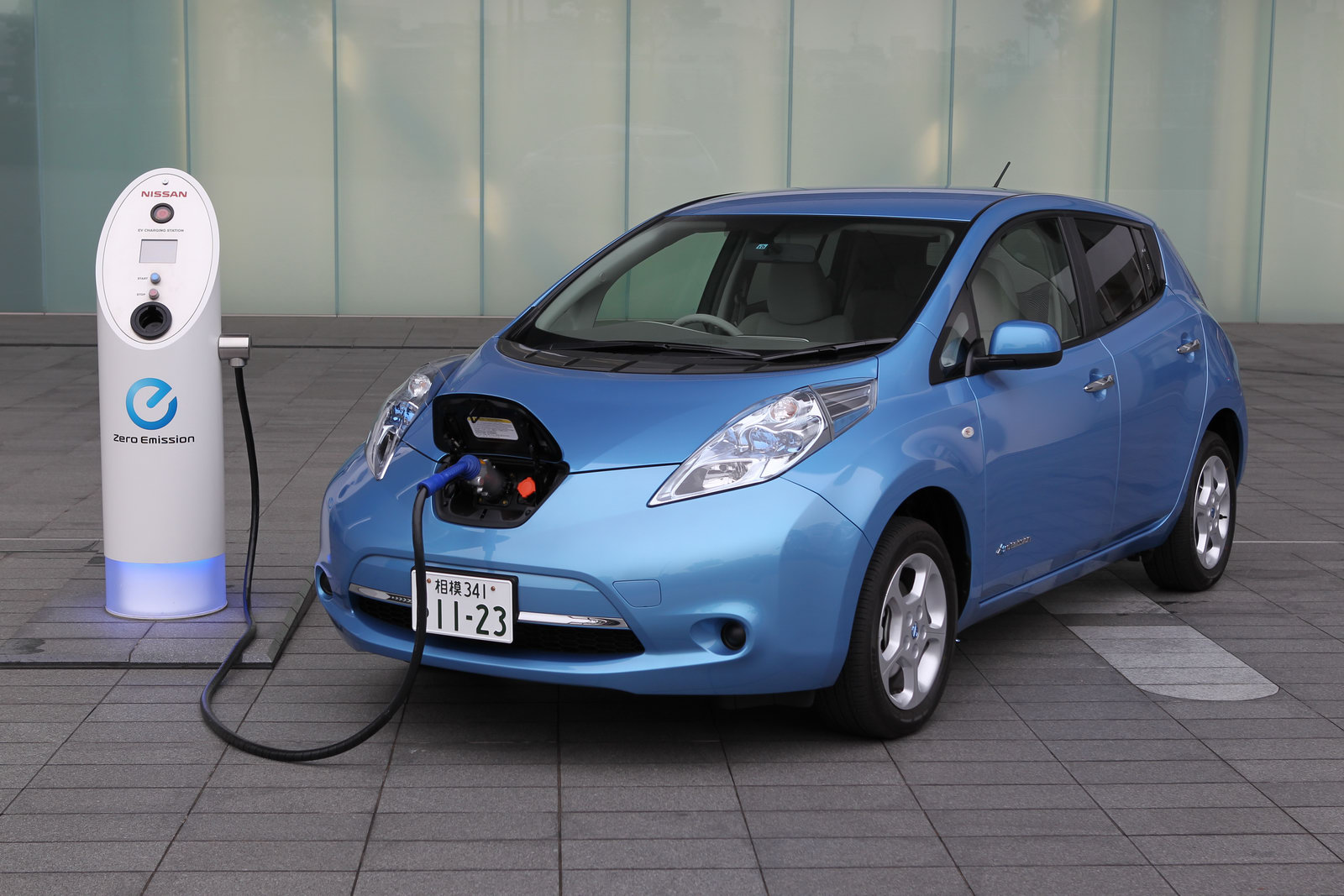Will plug-in electric cars crash the electric grid?
February 25, 2014

Nissan Leaf (credit: Nissan)
The growing number of plug-in electric cars — more than 96,000 bought in 2013 — may put a lot of new strain on the nation’s aging electrical distribution systems, like transformers and underground cables, especially at times of peak demand, according to University of Vermont (UVM) scientists.
So they have created a novel solution, which they report on in the forthcoming March issue of IEEE Transactions on Smart Grid.
Packetizing power
“The key to our approach is to break up the request for power from each car into multiple small chunks — into packets,” says Jeff Frolik, a professor in the College of Engineering and Mathematical Sciences and co-author on the new study. This is similar to transmitting data packets on the Internet.
By using the nation’s growing network of “smart meters” — a new generation of household electric meters that communicate information back-and-forth between a house and the utility — the new approach would let a car charge for, say, five or ten minutes at a time, Frolik says, and then wait to make another request for power. If demand was low, it would continue charging, but if it was high, the car would have to wait.
“Most of the time, as long as people get charged by morning, they won’t care,” says UVM’s Paul Hines, an expert on power systems and co-author on the study. “By charging cars in this way, it’s really easy to let everybody share the capacity that is available on the grid.”
Spreading out demand
The team’s strategy would allow electric utilities to spread out the demand from plug-in cars over the whole day and night. The information from the smart meter prevents the grid from being overloaded.
“The problem of peaks and valleys is becoming more pronounced as we get more intermittent power — wind and solar — in the system,” says Hines. “There is a growing need to smooth out supply and demand.”
At the same time, the UVM teams’ invention would protect a car owner’s privacy. A charge management device could be located at the level of, for example, a neighborhood substation. It would assess local strain on the grid. If demand wasn’t too high, it would randomly distribute “charge-packets” of power to those households that were putting in requests.
Why put plug-in cars on “packetized” demand instead of all the other electric demands in a house? Because the new generation of car chargers, so-called “Level 2 PEV chargers” are likely to be the biggest power load in a home. “The load provided by an electric vehicle and the load provided by a house are basically equivalent,” says Frolik. “If someone gets an electric vehicle it’s like adding another house to that neighborhood.”
Imagine a neighborhood where everyone buys a plug-in car. Demand doubles, but it’s over the same wires and transformers. Concern about overload in this kind of scenario has led some researchers and utilities to explore systems where the company has centralized control over who can charge when. This so-called “omniscient centralized optimization” can create a perfectly efficient use of the available power — in theory.
But it also means drivers have to either be willing to provide information about their driving habits or set schedules about when they’ll charge their car. This rubs against the grain of a century’s worth of understanding of the car as a tool of autonomy.
Others have proposed elaborate online auction schemes to manage demand. “Some of the other systems are way too complicated,” says Hines, who has extensive experience working with actual power companies. “In a big city, a utility doesn’t want to be managing millions of tiny auctions. Ours is a much simpler system that gets the job done without overloading the grid and gets people what they want the vast majority of the time.”
Abstract of IEEE Transactions on Smart Grid paper
Plug-in electric vehicle (PEV) charging could cause significant strain on residential distribution systems, unless technologies and incentives are created to mitigate charging during times of peak residential consumption. This paper describes and evaluates a decentralized and “packetized” approach to PEV charge management, in which PEV charging is requested and approved for time-limited periods. This method, which is adapted from approaches for bandwidth sharing in communication networks, simultaneously ensures that constraints in the distribution network are satisfied, that communication bandwidth requirements are relatively small, and that each vehicle has fair access to the available power capacity. This paper compares the performance of the packetized approach to an optimization method and a first-come, first-served (FCFS) charging scheme in a test case with a constrained 500 kVA distribution feeder and time-of-use residential electricity pricing. The results show substantial advantages for the packetized approach. The algorithm provides all vehicles with equal access to constrained resources and attains near optimal travel cost performance, with low complexity and communication requirements. The proposed method does not require that vehicles report or record driving patterns, and thus provides benefits over optimization approaches by preserving privacy and reducing computation and bandwidth requirements.